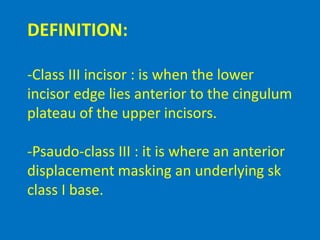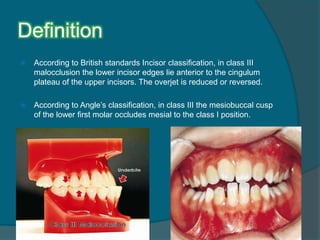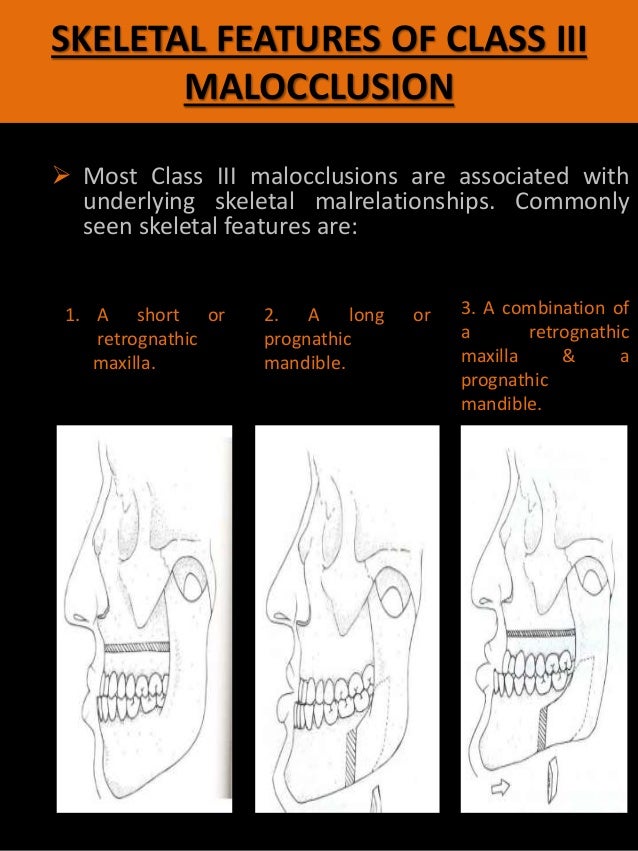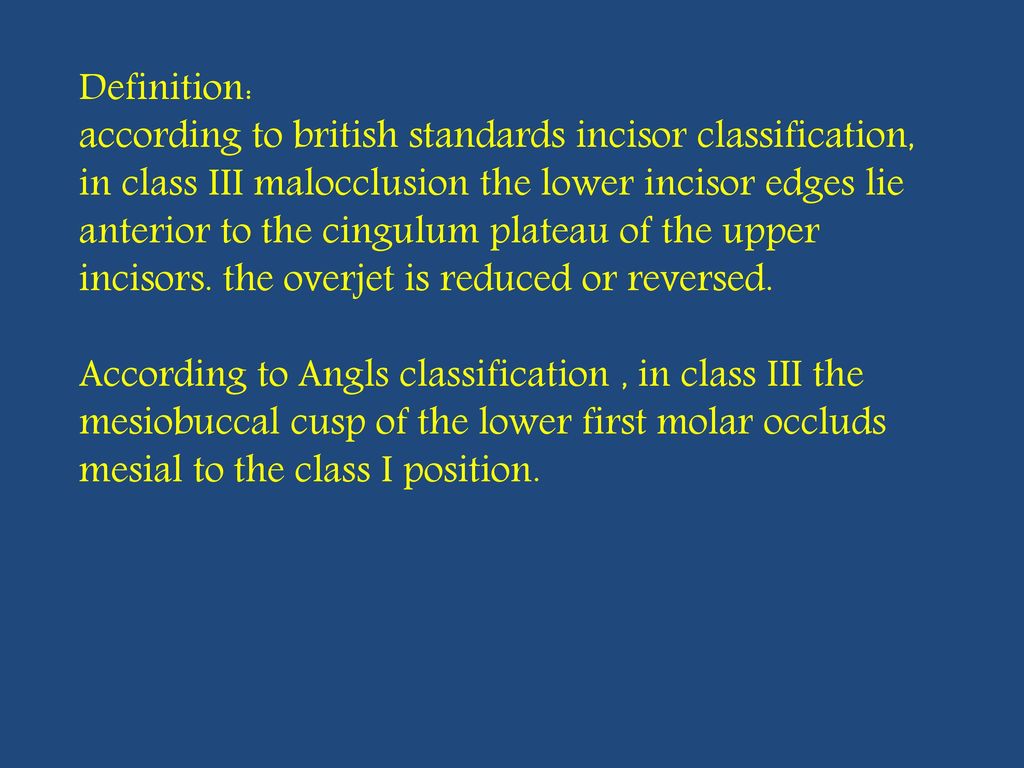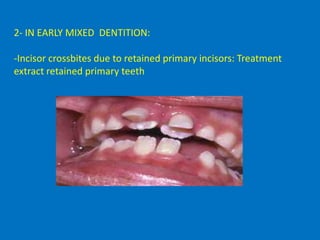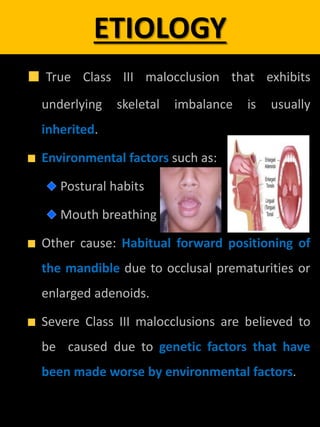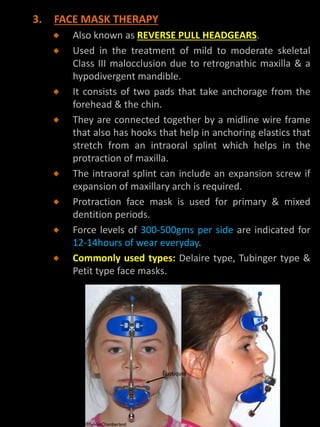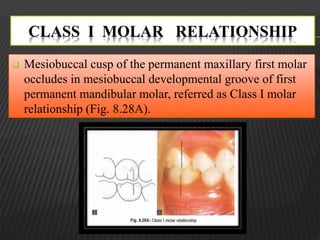class iii malocclusion slideshare
-Class III incisor. However it is important to specify that this patient shows an upper jaw upper maxilla displaced posteriorly or maxillary retrognathia.
CLASS III SUB-DIVISION Condition in which class III molar relationship is present only on one side with normal relation on the other side.
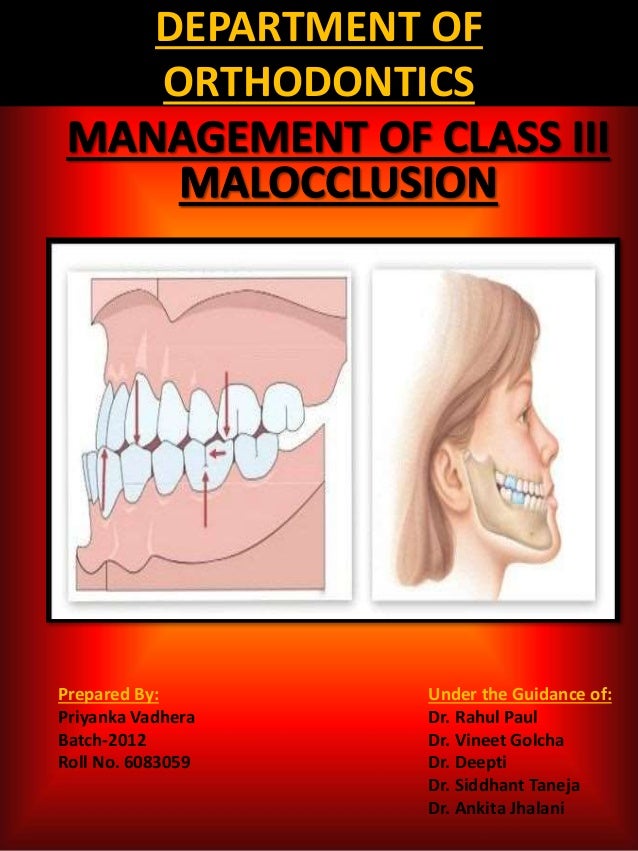
. Class III malocclusion has a multifactorial etiology which is the expression of a moderate distortion of normal development as a result of interaction between innate factors or genetic hereditary with environmental factors. Pseudo dentoalveolar and skeletal. The market is expected to reach USD 471 Billion by 2021 at a CAGR of 80 during the forecast period.
1 The reported incidence of this malocclusion ranges between 1 to 19 with the lowest among the Caucasian populations 23 and the highest among the Asian populations. Compensated class III malocclusion PSEUDO CLASS III MALOCCLUSION. Class II division 2 malocclusion.
The laterals are overlapped the centrals and the overbite is usually deep. Clinicians have been trying to identify the best timing to intercept a Class III malocclusion that develops as early as the deciduous dentition. The lower incisors much more vertically.
However adult patients with an anterior crossbite should still check for functional shift CO-CR discrepancy during clinical. Class III mandibular prognathism. The etiology of Angle class III malocclusion with facial asymmetry has not been fully elucidated.
Class II division 1 malocclusion Molar relation is class II The upper insisors are proclined. The American Veterinary Dental College defines Class II malocclusion as mandibular distocclusion when there is an abnormal rostro-caudal relationship between the dental arches in which the mandibular arch occludes caudal to its normal position relative to the maxillary arch Figure 3Terms that have commonly been associated with class II. Molar relation is class II The upper insisors are retroclined.
Various skeletal topographies of underlying Class III malocclusion are due to discrepancy in the maxillary and mandibular. Class III malocclusions are the least common type of malocclusion yet they are often more complicated to treat and more likely to require orthognathic surgery for optimal correction. Class III malocclusion A malocclusion that is.
Overjet It is the h o r i z o n t a l d i s t a n c e between the labial aspect of the lower incisors and the incisal edge of the upper incisors when the teeth are in centric occlusion. PSEUDO CLASS III MALOCCLUSION Due to occlusal prematurity when the mandible moves from rest position to occlusion it slides forward into a pseudo class III position. The overjet was increased in 953 Figure 10 and overbite in 767 Figure 11 of the patients with Class II division 1 malocclusion.
- Abnormal overjet - Anterior cross-bite Anteriorly Posteriorly Class II malocclusion Class III malocclusion In the Sagittal direction OR Either. Overjet horizontal overlap of incisors. Angle Tweed and Moyers classified Class III malocclusions into 3 types.
Its also known as postural class III. Inspired by the strong inheritance pattern of a specific type of skeletal malocclusion previous genome-wide association studies GWAS were reanalyzed resulting in the identification of 19 skeletal class II malocclusion-associated and 53 skeletal. It is where an anterior displacement masking an underlying sk class I base.
200 West 57th Street Suite 405 New York NY 10019 Phone. Angle classification Extraoral features ORTHOPAEDIC APPLIANCES MYOFUNCTIONAL APPLIANCES ORTHODONTIC CAMOUFLAGE ORTHOGNATHIC SURGERY. Class III molar relationship exists on one side.
Very easy to identify but is often Difficult to treat. 3-5 UK -IN ASIAN POPULATION. Class II malocclusion.
Class II division 2 malocclusion. PSEUDO Class III malocclusion FALSE or postural which occurs when mandible shifts anteriorly during final stages of closure due to premature contact of incisors or the canines. Class II malocclusion is subdivided into two types.
Forward movement of the mandible during jaw closure can also result from premature loss of deciduous posterior teeth. The path of closure is from the postural rest position to occlusion must be carefully studied. OCCLUSION IN THE CHILD.
Compensated class III malocclusion PSEUDO CLASS III MALOCCLUSION. Is when the lower incisor edge lies anterior to the cingulum plateau of the upper incisors. 10 IN CHILDREN 4.
Fourteen patients with severe skeletal class III malocclusion male 4 female 10 age rang 120 - 171 years old mean age 133 - 08 diagnosed as requiring orthognathic surgery but rejected. CLASS III SUB-DIVISION Condition in which class III molar relationship is present only on one side with normal relation on the other side. Prevalence of class III malocclusion in Caucasians ranges from 08 to 40 and rises up to 1213 in Chinese and Japanese populations while in North Indian population class III malocclusion is found in up to 34 of The upper teeth are more advanced compared to the lower teeth a 11-mm overjet and we can easily see that the lower incisors touch the palate at the back of the upper.
PowerPoint PPT presentation free to download. The class III classification of medical devices follows rigorous controls most of which require a Premarket Approval PMA submission or De How to Classify a Class III Medical Device. Skeletal Class III malocclusion can be classified into retruded maxilla protruded mandible or a combination of the two according to cephalometric analysis.
With microimplants as skeletal anchorage or. This cephalometric X-ray shows the anterior discrepancy of the lower jaw commonly called mandibular prognathism. Pseudo Class III Malocclusion Pseudo class III malocclusion is a habitual established cross bite of all anterior teeth without any skeletal discrepancy resulting from functional forward positioningshift of the mandible on closure.
50 Generally as growth is completed there is little or no functional shift of the mandible on closure. This condition represents a pre-normalcy where the mandible is in a mesial relation to the upper arch According to Angle Class III molar relationship refers to a condition where the mesio-buccal cusp of the upper first mol or occludes between the mandibular first. The mandible may slide anteriorly into a forced protrusion because of premature contact and tooth guidance when the jaw closes into full occlusion.
Presence of torticollis was determined by measuring restricted. Orthodontic Supplies Market Forecast to 2021 - This report studies the orthodontic supplies market over the forecast period of 2016 to 2021. To investigate the etiology patients with asymmetric prognathism n 30 from a single institution were assessed for previously undiagnosed torticollis and cranial base asymmetry.

Class Iii Malocclusion Ppt Download
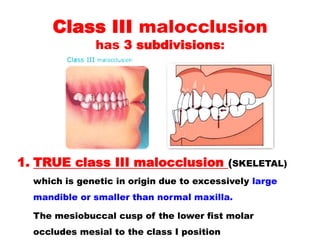
8 Setting Of Teeth For Class I Ii And Ii Arch Relation Ship Edit
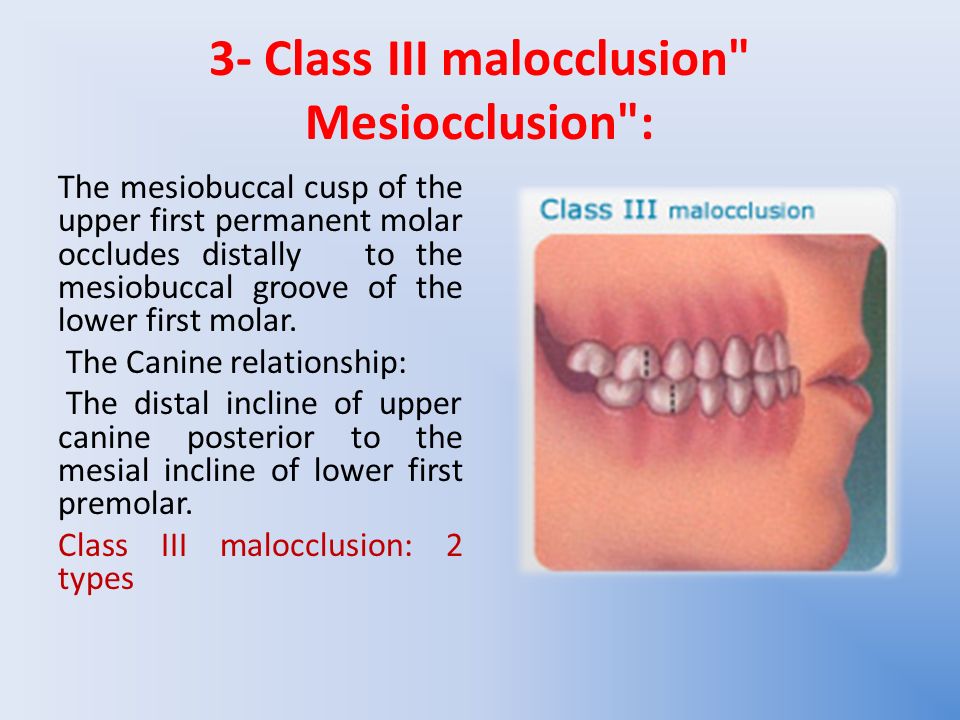
Orthodontic Dr Enas Talb 4th Class Ppt Video Online Download

Classification Of Malocclusion
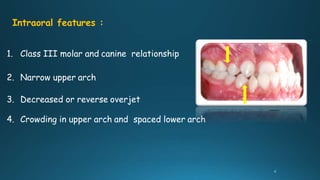
Treatment Of Class Iii Malocclusion

Classification Of Malocclusion
